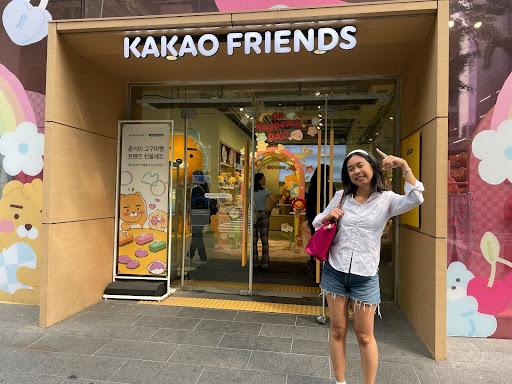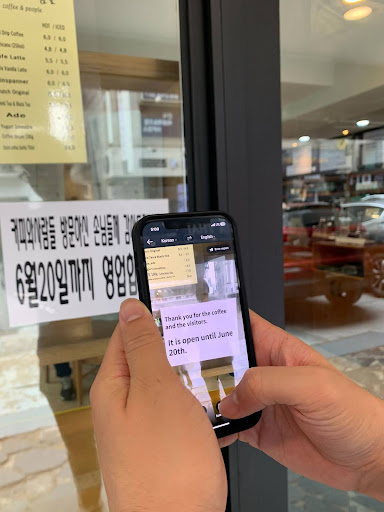In my first few days living and working in Korea, I quickly discovered what it was like to care for myself in a foreign country. I grew familiar with three popular apps that are essential for my two months stay here. If you have plans to come to Korea, these are my recommendations for you! Today, I will be talking about my experience using these trusty apps for the first time.
1. KakaoTalk
KakaoTalk is the ultimate messenger platform here in South Korea. KakaoTalk is a free app that is used by about 47 million Koreans in the country— 93% of the national population. The messenger app allows you to chat, voice call, and video chat your contacts. You can even send all kinds of gifts to be delivered to your friends through the app! Sometimes, if mutually agreed upon, even employees and their employer exchange KakaoTalk IDS and can communicate via the app. While I have a Korean SIM card installed in my phone, I have only used Kakao to message my peers and have not sent a single text from my Korean phone number. As an international intern in Seoul, I have connected with people from all over the world with various phone plans. Because of this, KakaoTalk has been an especially reliable and helpful platform to streamline all my communication here in Korea. Being connected on KakaoTalk can help you stay in touch with friends, colleagues, and acquaintances more conveniently.


2. PapaGo
PapaGo is a language translation service developed here in Korea. It is both a mobile app and website. Since the app was designed to specifically translate the Korean language, it is said to be more accurate than Google Translate for picking up the nuances and specific cultural expressions used here in Korea. There is even a “Phrasebook” feature in the app that includes many expressions helpful for daily life. It is not always a perfect translation, but it is useful nonetheless! To use, you can type what you would like to translate or you can use the “Voice Feature.” This allows you to speak directly into your mobile device with your preferred language to have your conversation translated in real time. In addition, when I can’t understand written information (menus, directions, instructions etc), it’s very easy to take a photo of Korean text to be translated! PapaGo has been a valuable tool to help me overcome the language barrier and allowed me to communicate effectively in Korea.
3. NaverMap
Out of the three apps, NaverMap was the hardest for me to get used to. A large reason for this is because only some parts of the app can be translated, while the rest remains in Korean. In addition, you must pay very close attention to your location on the map to make sure you are staying on track. It will not redirect your route if you stray away from it! After getting over the initial learning curve, this app has proven to be especially useful for my time here. In addition to walking and driving directions, it also provides detailed directions for using public transportation. It tells you exactly what metro or bus lines to use and how much your fare is. It also provides nearby recommendations and allows you to Bookmark frequented areas. NaverMap is a known and reliable tool for navigating and exploring various locations in Korea.
While there are certainly many other useful apps available, the ones I mentioned – KakaoTalk, PapaGo, and NaverMap – have so far been the most helpful in my own experiences as a foreigner! By familiarizing yourself with these apps, you’ll be able to enhance your daily communication, translation, and navigation experiences in Korea. They are essential for foreigners, whether you’re visiting, working, or studying in the country.









